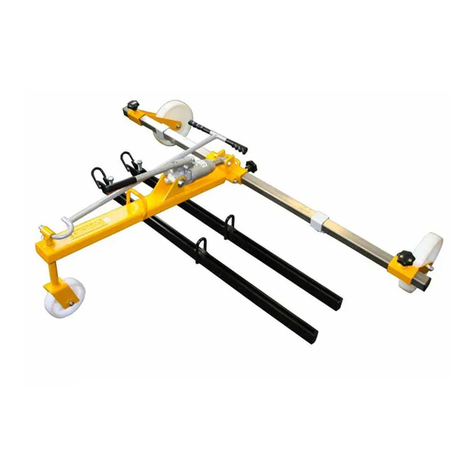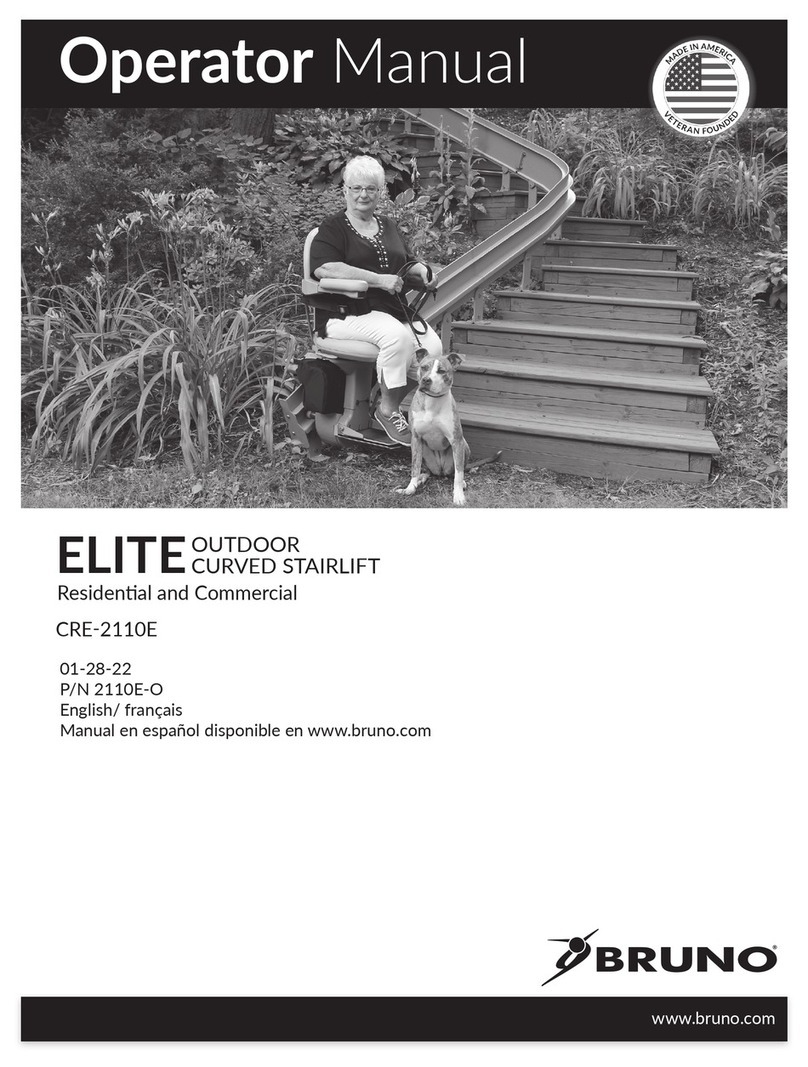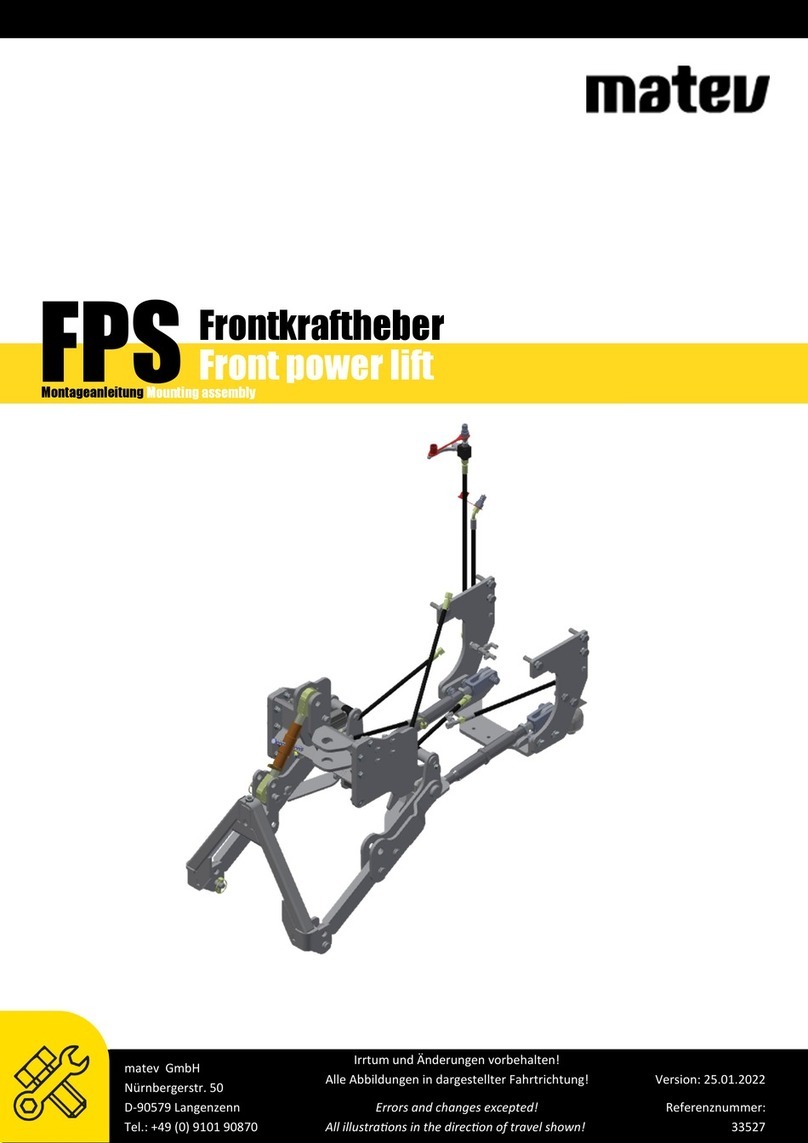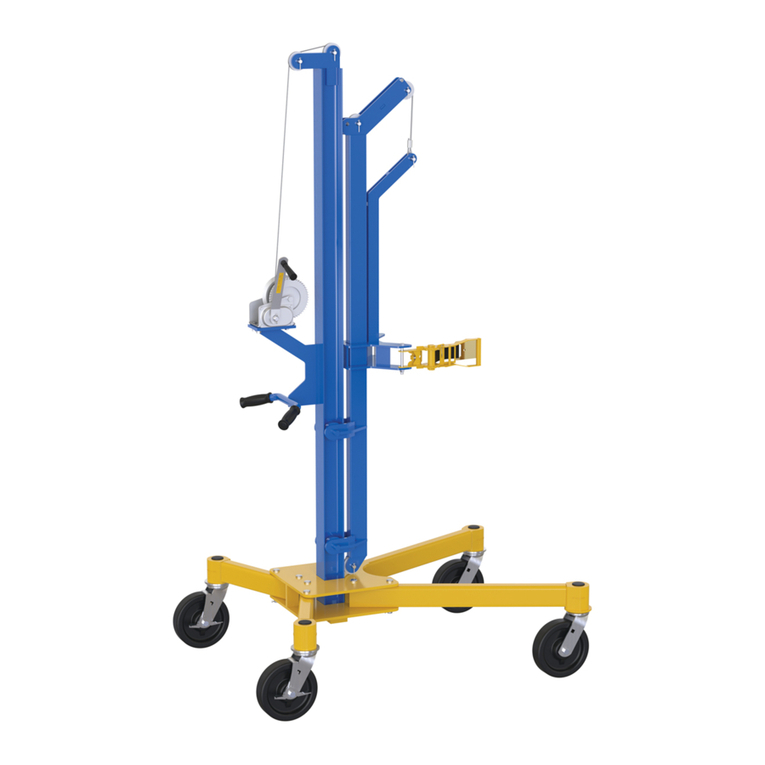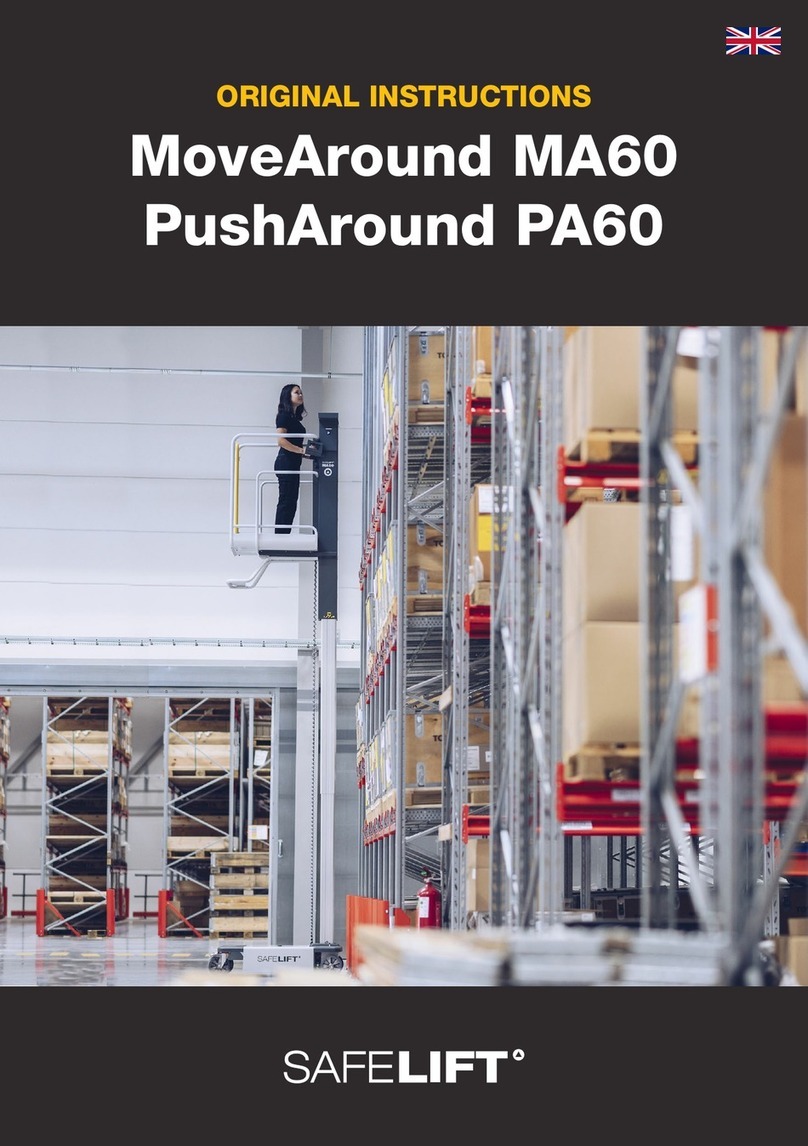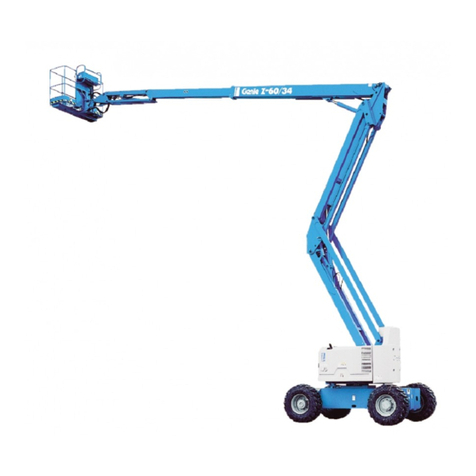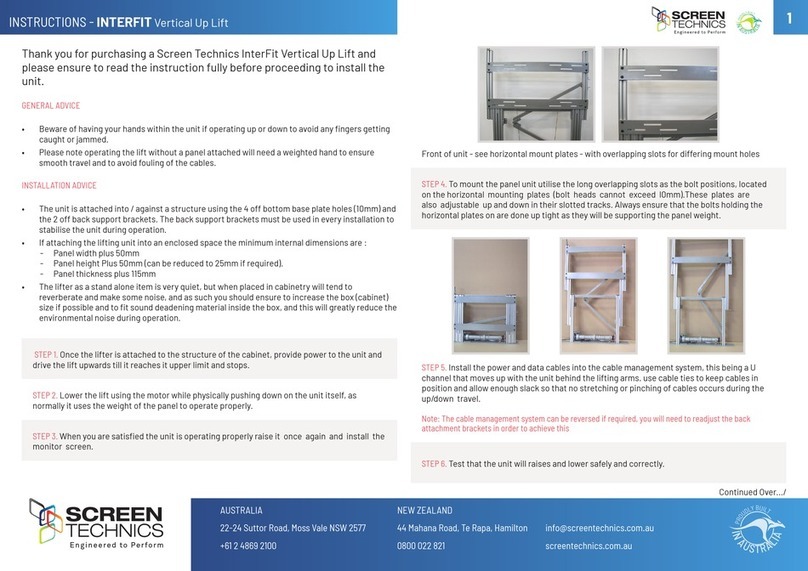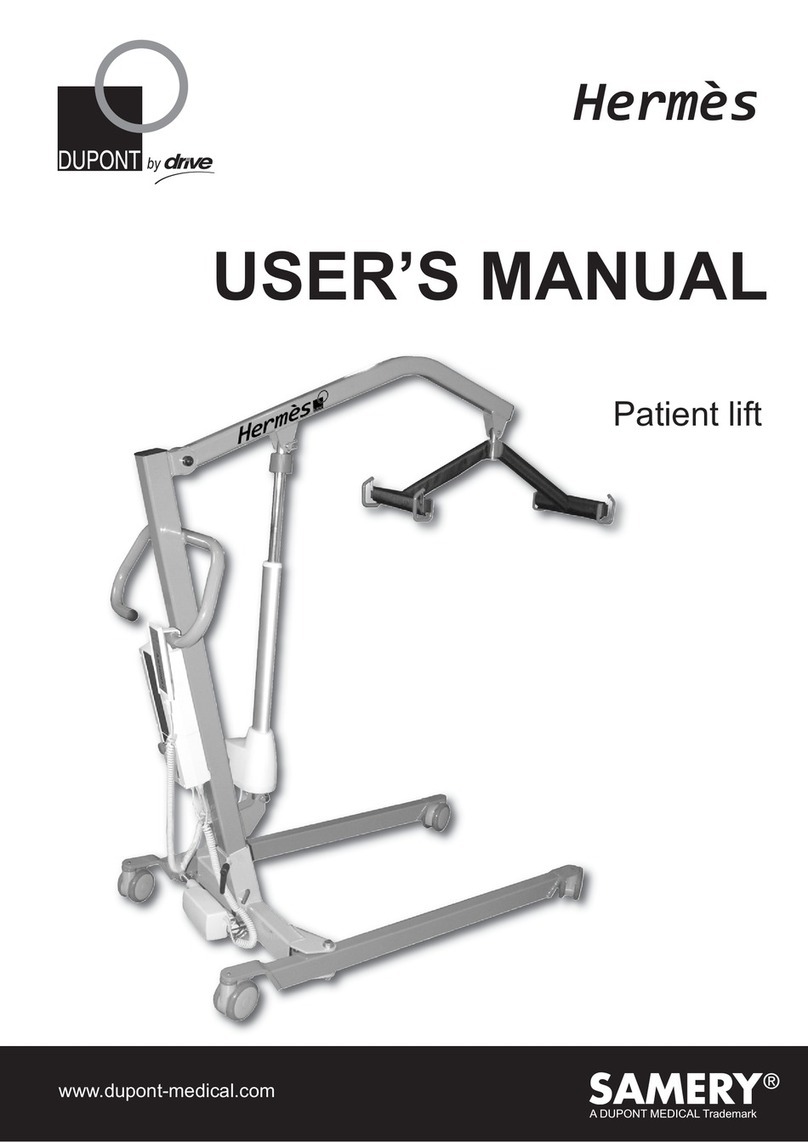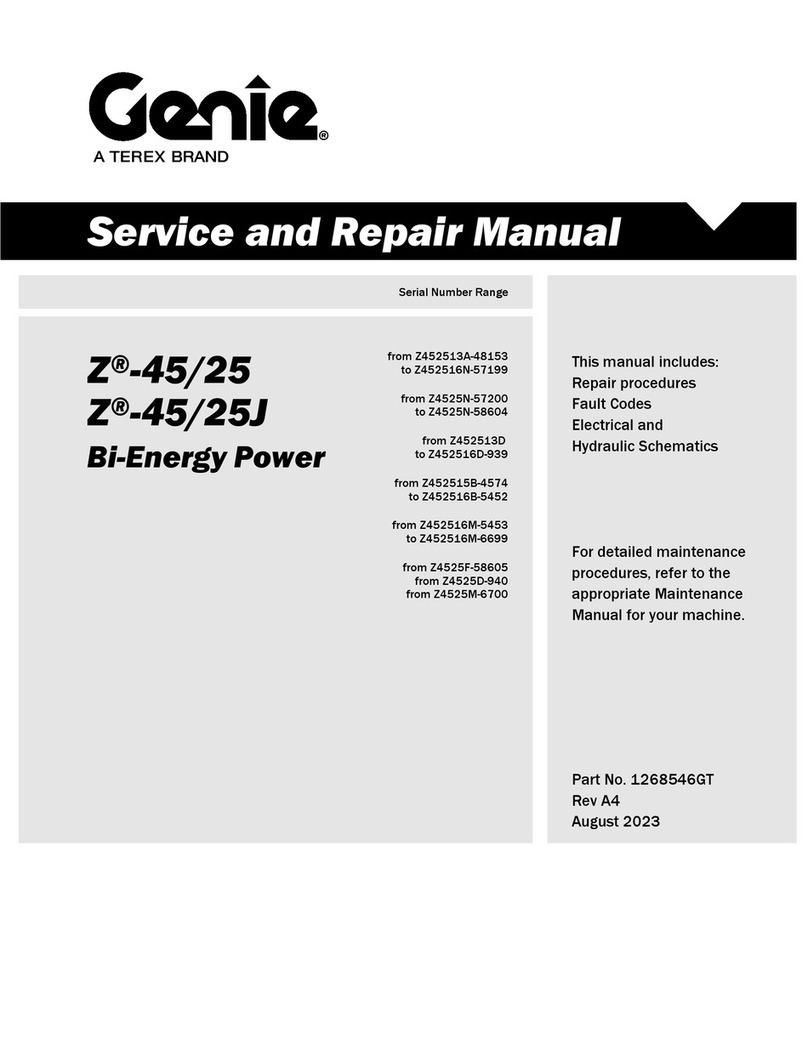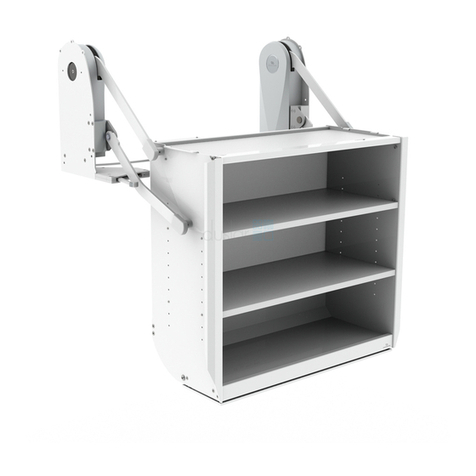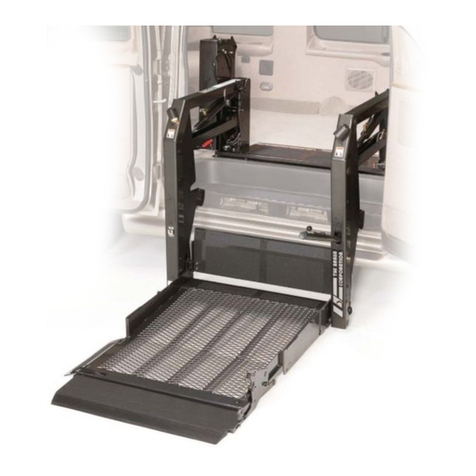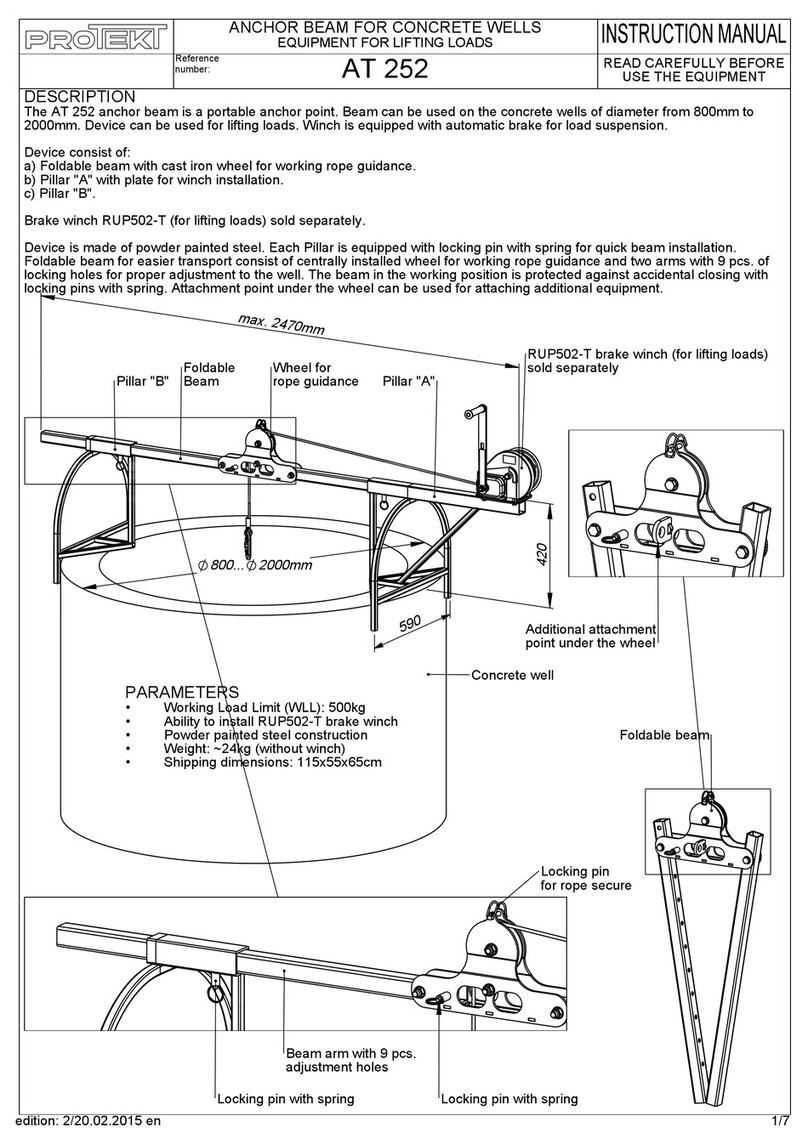
3 of 39pages
2.
Safety
The lift can only be used after you have thoroughly read and understood
these manual. Unauthorized modifications in the lift and its safety devices
are prohibited. PM-Tools shall not be responsible for any damages resulting
from violating of this regulations.
The following hints should be observed:
•
Risk of crushing.
•
Use personal protection equipment.
•
Observe all accident prevention regulations.
•
We recommend to create a 3-meter safety zone around the lift.
•
Make sure that the lift does not obstruct the exit paths. This is especially
important when the vehicle is placed on a lift.
•
Make sure that there are during the lifting and lowering of the lift there
are no dangerous situations in the safety zone. If this happens, stop the
lift immediately and remedy the cause of the dangerous situation.
Dangerous situations can include people or animals staying in the safety
zone of the lift.
•
Make sure there are no objects under the lift when it is raised.
•
Do not exceed the permissible load capacity. Observe the information
given on the rating plate.
•
Make sure that vehicle weight and load distribution in lifting points
conform to the recommendations given in this user's manual.
•
Make sure that disassembly of the vehicle parts will not cause shifting of
the load/centre of gravity so that the required limits are no longer
observed.
•
Secure the lift in lifted position lifting it only to the next safety catch and
installing the pin lock using a safety pin.
•
Depressurize the lift in case of failure or during maintenance and repair
works. To depressurize the lift, disconnect the air hose from the
connector.
•
Check for leaking hydraulic hoses.
•
Only original spare parts should be used.
pm-tools, Małorolnych 10B, PL-66-400 Gorzów Wielkopolski,www.pmtools.pl
